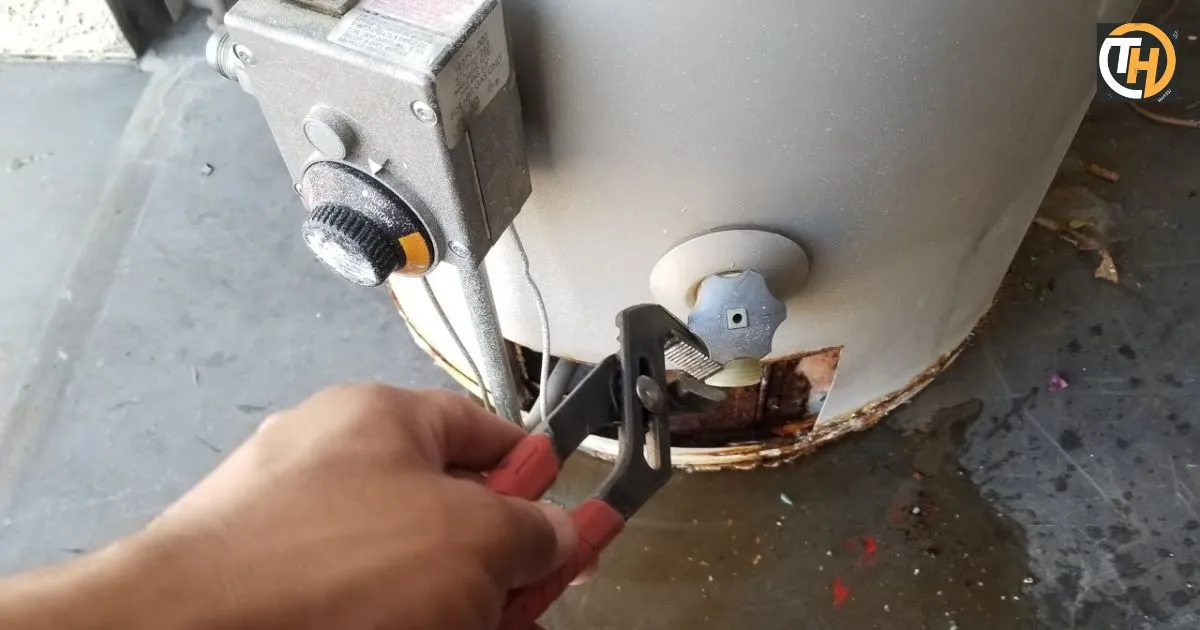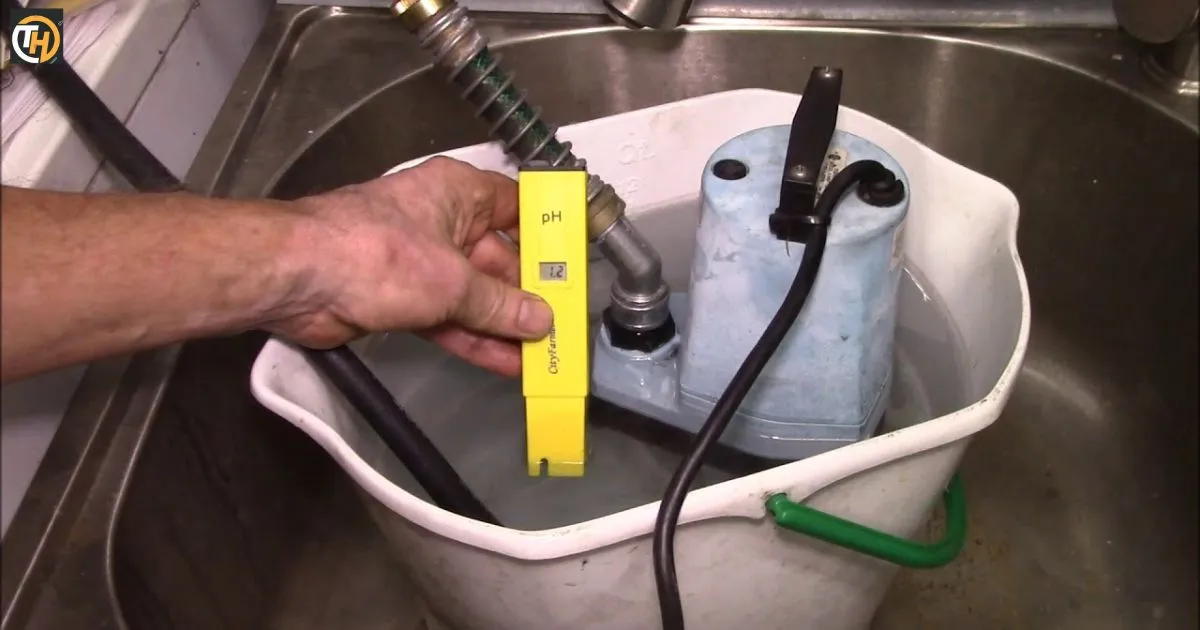Descale a Rinnai tankless water heater, it is essential to remove mineral deposits, mainly consisting of calcium and magnesium, which accumulate within the unit over time. These deposits, commonly known as limescale, can impede the heater’s efficiency. Consequently, this may result in reduced performance and increased energy consumption.
Imagine stepping into a refreshing shower only to be greeted by lukewarm water – a situation no one fancies, especially during colder months. The culprit? Limescale buildup in your Rinnai tankless water heater. Fear not, as we delve into the fascinating journey of descaling, and unraveling the secrets to restoring your water heater’s optimal performance.
Rinnai tankless water heaters, renowned for their energy efficiency and continuous hot water supply, are not immune to the effects of hard water. Hard water, rich in minerals, can leave stubborn deposits inside the heater, affecting its heat exchanger and overall functionality.
Understanding Scaling in Tankless Water Heaters
Explanation of Scaling and Its Impact
Scaling occurs when minerals like calcium and magnesium precipitate and build up on the heat exchanger surfaces. This insulating layer reduces the efficiency of heat transfer, making the water heater work harder to produce hot water.
Why Rinnai Tankless Water Heaters Are Susceptible to Scaling
Rinnai heaters, although efficient, are not immune to scaling. Their design, which involves a heat exchanger, makes them susceptible. Understanding this vulnerability is the first step in preventing and addressing scaling issues.
Limescale Buildup
Limescale buildup in a Rinnai tankless water heater can have far-reaching consequences on its performance. As minerals accumulate, they form a layer on the heat exchanger, reducing its ability to transfer heat efficiently. This results in longer heating times, increased energy consumption, and a decline in the heater’s overall efficiency.
Efficiency and Increased Energy Costs
The insulating effect of limescale forces the heater to work harder to maintain the desired water temperature, leading to increased energy consumption. The impact on electricity bills becomes evident as the heater struggles against the insulating layer, requiring more energy to achieve the same heating results.
This increased energy demand directly contributes to higher electricity costs, affecting the overall household budget and emphasizing the importance of addressing limescale buildup promptly.
Potential Damage to Components
Beyond efficiency concerns, unchecked limescale buildup can lead to more severe issues. The accumulation of minerals can cause overheating, leading to damage to the heat exchanger and other vital components. Regular descaling is, therefore, a preventive measure against costly repairs and replacements.
How to Descale Your Rinnai Tankless Water Heater
Step-by-Step Descaling Guide
Descaling your Rinnai tankless water heater may seem daunting, but with the right approach, it becomes a manageable and essential maintenance task. Follow these steps to ensure a thorough and effective descaling process.
Gather the Necessary Materials
Before embarking on the descaling journey, ensure you have all the required materials at your disposal. You will need a bucket, a submersible pump, a descaling solution compatible with your Rinnai unit, and a pair of protective gloves.
Turn Off the Power and Water Supply
Prioritize safety by turning off the power supply to your Rinnai tankless water heater. Locate the shut-off valves for both the hot and cold water lines, and turn them off.
Connect the Submersible Pump
Connect the submersible pump to the service valves, ensuring a secure connection. Place the pump inlet into the bucket and the outlet to the cold water service valve.
Introduce the Descaling Solution
Mix the descaling solution as per the manufacturer’s instructions. Pour the solution into the bucket, allowing the submersible pump to circulate it through the water heater. This helps break down and dissolve the limescale deposits.
Circulate the Solution
Begin by turning on the submersible pump; subsequently, let the descaling solution circulate through the system for the recommended duration. This allows the solution to effectively remove the mineral deposits from the heat exchanger and other components.
Flush the System

After the descaling process is complete, flush the system with clean water to remove any remaining descaling solution. Ensure the water runs clear to guarantee the removal of all loosened limescale particles.
Maintenance Tips for Prolonged Efficiency
Regular descaling is just one aspect of maintaining your Rinnai tankless water heater. Implementing a few additional maintenance tips can contribute to prolonged efficiency and optimal performance.
Install a Water Softener
Consider installing a water softener to address hard water issues at the source. This helps prevent excessive mineral buildup in your tankless water heater, reducing the frequency of descaling.
Check and Clean the Inlet Screen
Periodically check and clean the inlet screen of your Rinnai unit. This is crucial because a clogged screen can restrict water flow, consequently affecting the heater’s performance. Regular cleaning ensures a steady water supply and reduces strain on the system.
Summarizing table to Descale for a Rinnai tankless water heater:
| Step | Key Point | Description |
| 1 | Turn Off Power and Gas Supply | Ensure the safety by turning off the power supply to the water heater and shutting off the gas or propane supply. |
| 2 | Gather Supplies | Collect necessary items, including an appropriate descaling solution as recommended by Rinnai. |
| 3 | Locate and Access Heat Exchanger | Identify the heat exchanger location on your Rinnai unit. It’s typically a compact and accessible component. |
| 4 | Remove Isolation Valves | If your unit has isolation valves, close them to prevent the descaling solution from flowing into your water lines. |
| 5 | Connect Descale Pump | If using a descaling pump, connect it to the water heater. Follow the manufacturer’s instructions for proper setup. |
| 6 | Create Descaling Solution | Mix the descaling solution according to the manufacturer’s instructions. Common solutions include vinegar or a commercial descaler. |
| 7 | ** Circulate Solution Through Heat Exchanger** | Use the descaling pump or other appropriate method to circulate the descaling solution through the heat exchanger. Allow it to sit as per the recommended time. |
| 8 | Flush the System | After the recommended time, flush the system with clean water to remove any remaining descaling solution and loosened deposits. |
| 9 | Check for Residue | Inspect the heat exchanger for any remaining residue. If necessary, repeat the descaling process until the heat exchanger is clean. |
| 10 | Restore Gas and Power Supply | Once the descaling process is complete and the system is thoroughly flushed, restore the gas or propane supply and turn on the power to the water heater. |
| 11 | Monitor Performance | Observe the performance of the water heater. If there are any issues or if performance hasn’t improved, consult the manufacturer’s guidelines or seek professional assistance. |
Additionally, remember to follow the specific guidelines provided in your Rinnai water heater’s manual, as different models may have slight variations in the descaling process.
FAQs
Q: How do I describe my tankless water heater?
A: Follow the manufacturer’s guidelines; generally, turn off the power, isolate valves, circulate the descaling solution, and flush.
Q: What’s the process for descaling an on-demand water heater?
A: Turn off power, isolate valves, use a descaling solution, circulate through the heat exchanger, flush, and restore power.
Q: Can I describe a 50-gallon hot water heater?
A: Yes, follow similar steps as for tankless heaters: turn off power, isolate valves, use descaling solution, circulate, flush, and restore power.
Q: What’s the cost of descaling a tankless water heater?
A: Costs vary, including descaling solutions and potential professional service. DIY is generally more affordable.
Q: How do I describe a Paloma tankless water heater?
A: Similar to other tankless models, follow the manufacturer’s guidelines, using an appropriate descaling solution.
Conclusion
Descaling your Rinnai tankless water heater is a fundamental maintenance task that directly impacts its efficiency and longevity. Limescale buildup may seem inconspicuous, but its effects can be detrimental to both performance and energy consumption. With the recommended descaling procedures outlined in your Rinnai manual, you can effectively remove mineral deposits and sediment, preventing potential issues such as reduced efficiency and prolonged heating times.
Don’t wait for lukewarm showers or increased energy bills; take proactive measures to descale your Rinnai tankless water heater and enjoy the full benefits of this advanced water heating technology.











